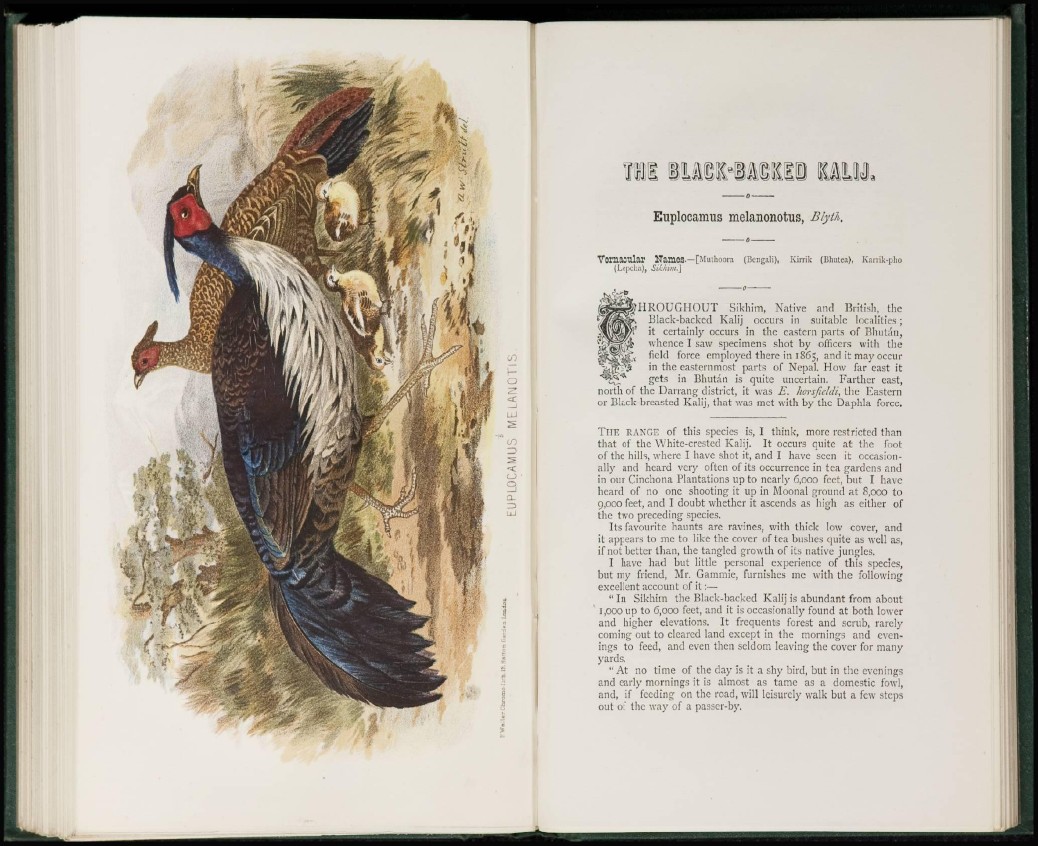
Euplocamus melanonotus, BIyth.
Vernacular ITames— [Muthoora (Bengali), Kirrik (Bhutea), Kamk-pho
(Lcpeha), Sikliim.\
T H R O U G H O U T Sikhim, Native and British, the
Black-backed Kalij occurs in suitable localities;
it certainly occurs in the eastern parts o f Bhutan,
whence I saw specimens shot by o f f i c e r s with the
field force employed there in 1865, and it may occur
" ^ f^^i in the easternmost parts of Nepal. How far east it
" ^ ^ ^ gets in Bhutan is quite uncertain. Farther east,
north of the Uarrang district, it was E. horsfieldi, the Fastern
or Black-breasted Kalij, that was met with by the Daphla force.
T H E RANGE of this species is, I think, more restricted than
that of the White-crested Kalij. It occurs quite at the foot
of the hills, where I have shot it, and I have seen it occasionally
and heard very often of its occurrence in tea gardens and
in our Cinchona Plantations up to nearly 6,000 feet, but I have
heard of no one shooting it up in Moonal ground at 8,000 to
9,000 feet, and I doubt whether it ascends as high as either of
the two preceding species.
Its favourite haunts are ravines, with thick low cover, and
it appears to me to like the cover of tea bushes quite as well as,
if not better than, the tangled growth of its native jungles.
I have had but little personal experience of this species,
but my friend, Mr. Gammie, furnishes me with the following
excellent account of i t :—
" In Sikhim the Black-backed Kalij is abundant from about
1,000 up to 6,000 feet, and it is occasionally found at both lower
and higher elevations. It frequents forest and scrub, rarely
coming out to cleared land except in the mornings and evenings
to feed, and even then seldom leaving the cover for many
yards.
"At no time of the day is it a shy bird, but in the evenings
and early mornings it is almost as tame as a domestic fowl,
and, if feeding on the road, will leisurely walk but a few steps
out of the way of a passer-by.